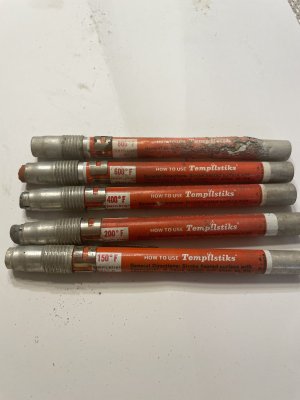FatherWes
Wes
My experience has also thought me to not trust temperature measurements using IR guns on shiny metal, especially stainless or aluminum, but bearing races too. Spray a tiny spot of black paint on the surface and measure off that.
@chickenlights highlighted the other, more correct way of dealing with different surface finishes: adjust the emissivity.
I always found it easier to spray the black dot than remember what emissivity to use.
@chickenlights highlighted the other, more correct way of dealing with different surface finishes: adjust the emissivity.
I always found it easier to spray the black dot than remember what emissivity to use.

